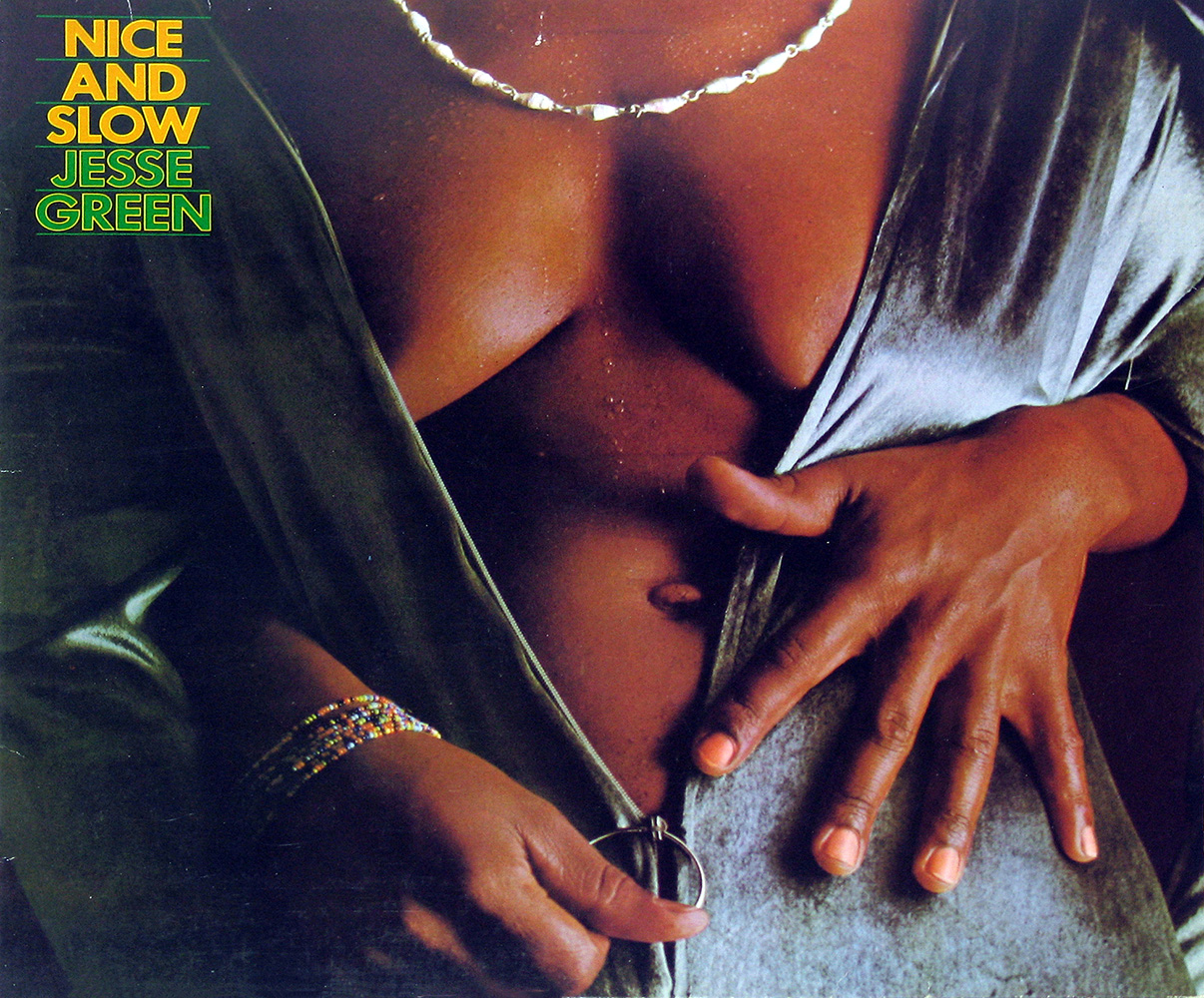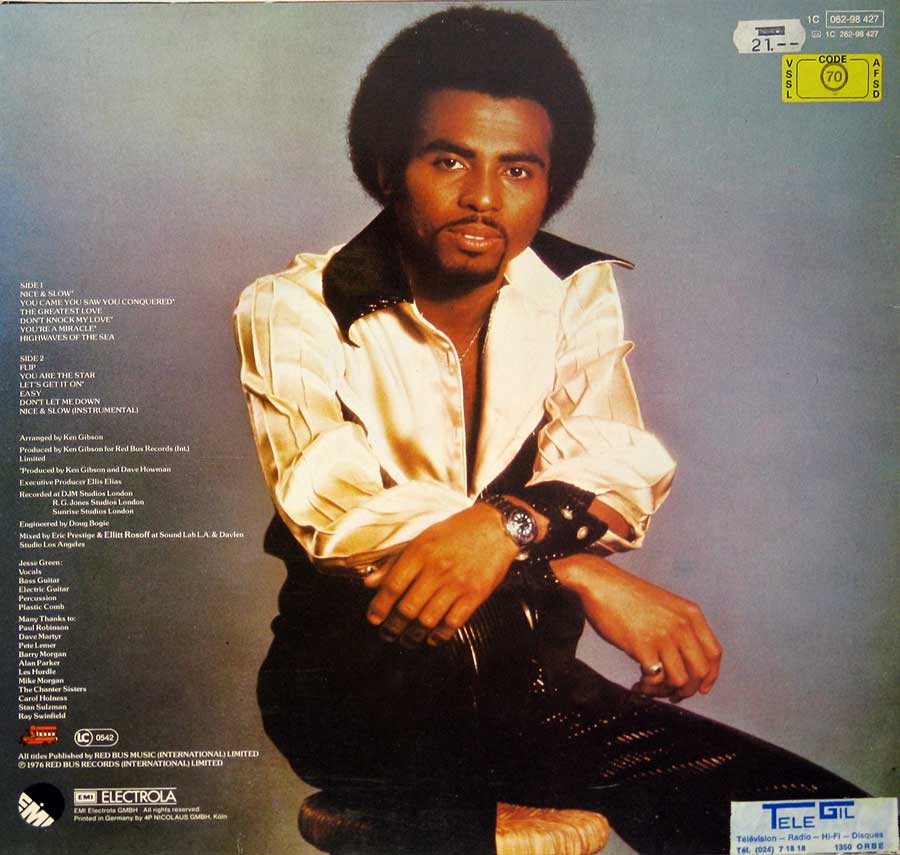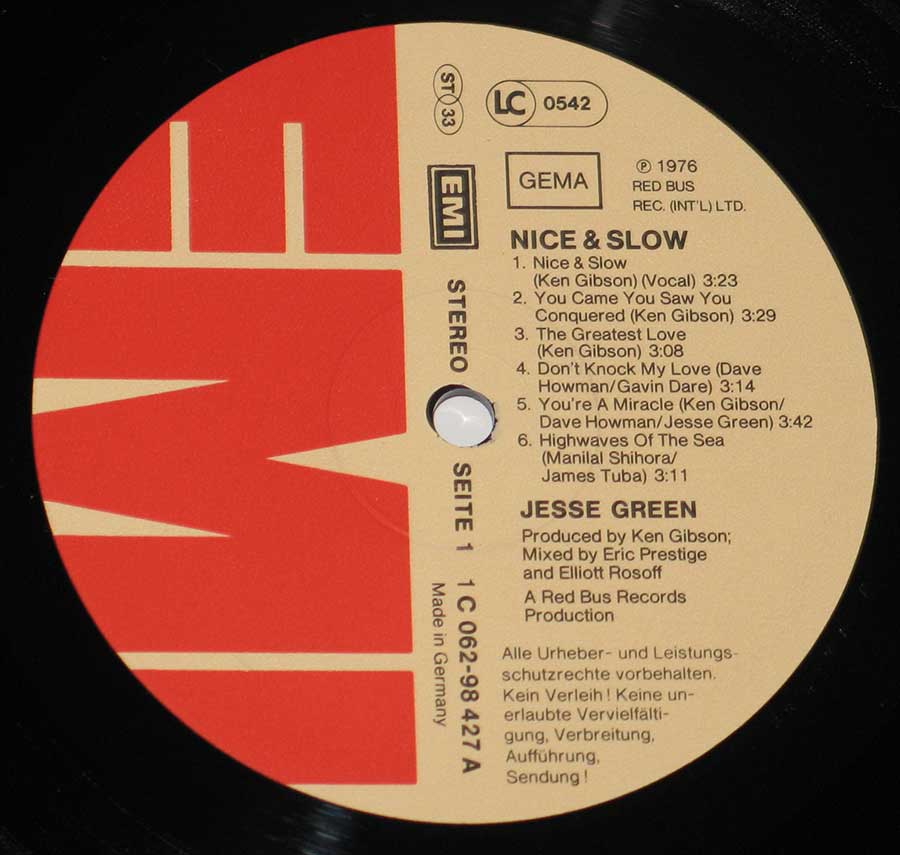The 1970s were a transformative decade for music, where genres like funk, disco, and soul dominated dance floors and airwaves. Among the artists who carved a niche during this vibrant era was Jamaican-born singer and songwriter Jesse Green. Known for his smooth voice and captivating stage presence, GreenÕs rise to prominence and the creation of his 1976 hit album Nice and Slow was a testament to his artistry and the musical spirit of the time.
Early Life and Musical Roots
Jesse GreenÕs story begins in Jamaica, where the islandÕs rich musical heritage deeply influenced him. As a young man, Green immersed himself in reggae, ska, and the burgeoning soul sounds filtering through local radio stations. His career started to take shape in the 1960s when he joined The Pioneers, a vocal trio that combined reggae rhythms with soulful melodies. This period laid the foundation for his later ventures, as he honed his vocal craft and developed a knack for writing infectious hooks.
Green eventually left The Pioneers to pursue a solo career, a bold move that set him on the path to international recognition. Relocating to Europe in the early 1970s, he found himself at the epicenter of the continentÕs disco explosion.
The Disco Wave and GreenÕs Breakthrough
The early 1970s marked a pivotal shift in popular music. Funk and soul evolved into disco, a genre that celebrated rhythm, glamour, and escapism. Europe, particularly Germany and the UK, became hotbeds for disco innovation, and Jesse Green was quick to adapt to the new sound.
His breakthrough came with the single ÔNice and Slow,Õ released in 1976. The song blended smooth, soulful vocals with a driving disco beat, a combination that resonated with audiences across dance floors. Its success was propelled by GreenÕs magnetic voice and the songÕs irresistibly seductive groove. The track quickly climbed the charts, solidifying his place among the eraÕs disco icons.
Creating the Nice and Slow Album
Following the success of the title track, Green collaborated with producer Ken Gibson to craft a full-length album that would build on the singleÕs momentum. Gibson, known for his sharp ear for blending contemporary trends with timeless sounds, brought in top-tier sound engineers Eric Prestige and Elliot Rosoff to shape the recordÕs sonic identity.
The result was Nice and Slow, an LP that captured the essence of the mid-1970s disco movement while showcasing GreenÕs versatility as a vocalist. The album featured a mix of upbeat dance tracks and soulful ballads, each infused with GreenÕs Jamaican charm and musical sophistication. Songs like ÔFlip,Õ ÔLetÕs Get It On,Õ and the instrumental reprise of the title track highlighted his ability to seamlessly bridge the gap between soulful introspection and disco exuberance.
The Cultural Landscape of 1976
Nice and Slow emerged at a time when disco was evolving from underground club culture into a global phenomenon. By 1976, artists like Donna Summer, Barry White, and The Bee Gees were dominating the charts, and disco fever was spreading across Europe and the United States. GreenÕs album capitalized on this trend, offering a unique take on the genre that reflected his reggae and soul influences.
Released under the Red Bus Records label in Germany, Nice and Slow was strategically positioned for success in the European market. The albumÕs sleek production and infectious rhythms made it a favorite among DJs and dance enthusiasts, ensuring its place on playlists and in clubs throughout the continent.
Legacy and Influence
Jesse GreenÕs Nice and Slow remains a testament to the vibrancy and creativity of 1970s disco. The title track, in particular, has endured as a classic, celebrated for its smooth melody and sensual groove. While Green did not achieve the same sustained fame as some of his contemporaries, his contributions to the eraÕs soundscape are undeniable.
The albumÕs success also highlighted the role of Caribbean artists in shaping global music trends. GreenÕs journey from reggae roots in Jamaica to disco stardom in Europe exemplified the genreÕs universal appeal and its power to bring diverse influences together on the dance floor.


